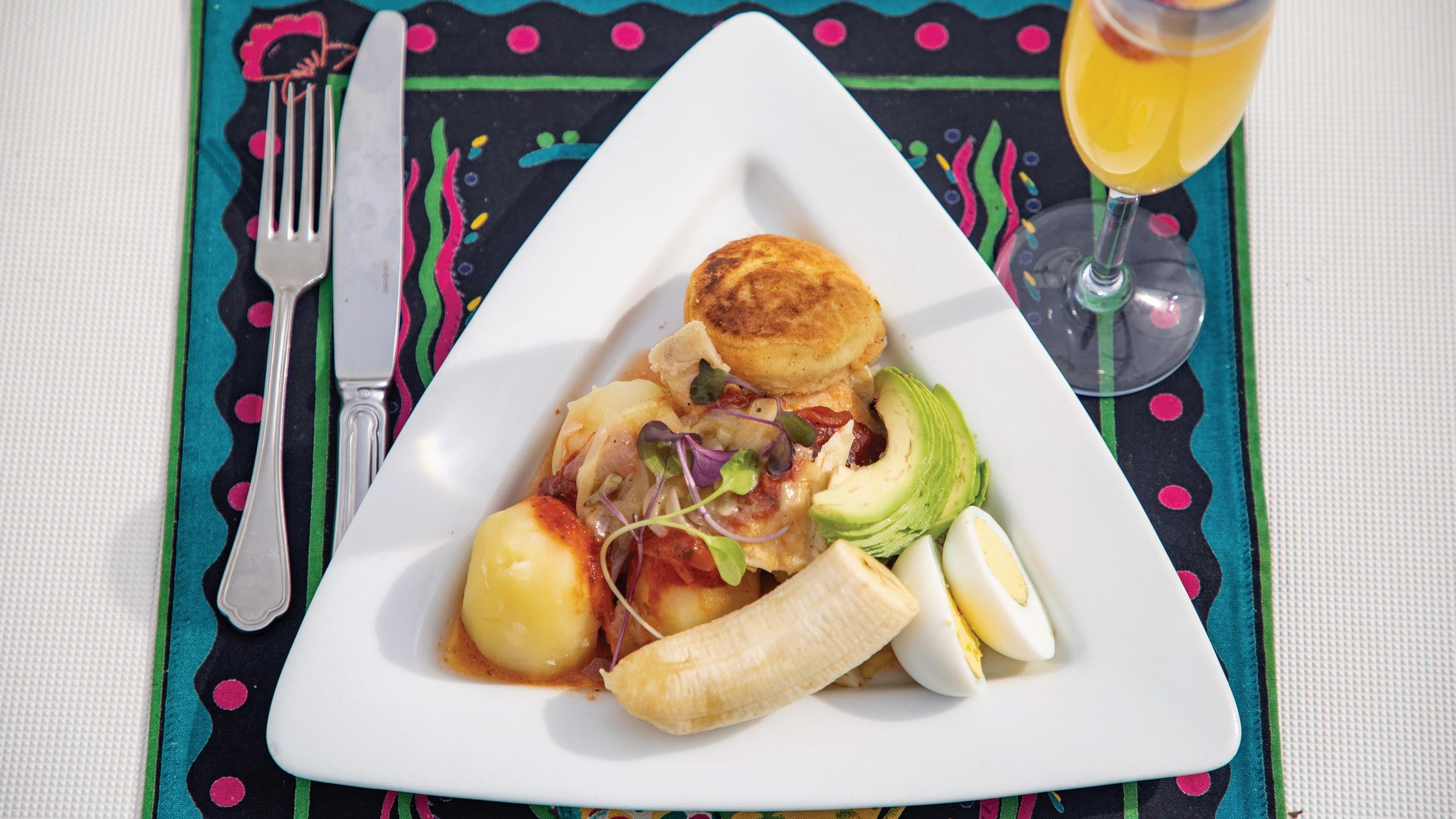Bermuda Fish Always Finds New Ways To Surprise You
The complexity of Bermuda's local cuisine is on full display at every meal.
Wrapped in rose-tinted sand and dotted with candy-colored 18th-century cottages, Bermuda lives up to its reputation for genteel beauty. There is loveliness everywhere you look, from the glistening turquoise waves of Hamilton Harbor to the aromatic frangipani trees blooming in yards. But honestly, I expected this. When I finally landed in Bermuda after years of overlooking this island in the middle of the Atlantic, the one thing I did know about it was that it was pretty. What I didn't know: all the ways in which Bermuda culture runs deeper than knee-scraping shorts and old-school British customs. The multi-layered complexity of this culture is reflected in its history, its traditions, and of course, its food.
As I traversed the nine parishes or counties of Bermuda, what struck me was the diversity of the scenery contained within such a small area. Spanning only 21 square miles, the island hosts a variety of sensory experiences. In Pembroke parish, the capital city of Hamilton is filled with polished boutiques and restaurants lining the cobblestone streets, and locals stroll by with friendly greetings. I was quickly identified as a "longtail," or visitor, rather than a local "onion," as Bermudians often call themselves (a reference to the Bermuda onions that the island was famous for in the 1800s). I explored crystal caves filled with glistening stalagmites in Hamilton parish, roamed the sun-scorched grass of the St. George parish cricket club for the raucous Cup Match games (where the teams took a break for tea), and hopped the ferry to the Royal Naval Dockyards in Sandys parish, where I climbed the Keep Fortress to visit the thought-provoking exhibits at the National Museum of Bermuda.
It was during a foraging tour of Cooper's Island Nature Preserve with Doreen Williams-James of Wild Herbs and Plants of Bermuda that the true complexity of the culture started to reveal itself. The reserve is located on St. David's Island, which was once an isolated island that wasn't joined to the mainland of Bermuda until 1877. Doreen and many of the area's residents are descended from the Pequot, an Indigenous people who were enslaved by the British and brought to the island along with Africans. The foraging of local plants for both food and health remedies was passed down through generations.
In the 12-acre preserve covered with a salt marsh, native grasses, and a pond, Doreen plucked scurvy grass, rich with vitamin C and broccoli flavor; sea purslane, a grass that grows near the sea and soaks up the salt, lending flavor to whatever you're cooking; and pimento leaves, which are alternately used for tea, seasoning, and footbaths. After picking and tasting dozens of plants, I enjoyed a lunch full of them: purslane falafel wrap and pumpkin allspice (pimento) donuts washed down with rosemary tea. The Bermudian love for a mix of savory and sweet tastes was on display in every bite.
The fabled Bermudian fish sandwich is possibly the best illustration of the cuisine's unlikely flavor pairings. When I first sampled one, I was taken aback by the swirl of sweet, cool, hot, and savory tastes all intermingling. Thick mounds of freshly caught fish (usually snapper or wahoo) are fried to a crisp, slathered with tartar sauce and coleslaw, and placed between slices of homemade raisin bread. It sounds like something that shouldn't work but it does, unforgettably.
Everywhere we went, the fish found a way to surprise me. I sampled a fish pie at Baxter's Pies on the west end of the island, a beloved spot with no sign but a line spilling out of the sky-blue storefront. The brown, flaky crust was filled with fresh grouper, mayonnaise, and chunky, homemade relish so sweet that it confused my tastebuds. Was it a fruit pie? Was it a fish sandwich covered with crust and jam? Bermudian cuisine, I came to realize, is as singular as the wider culture.
Bermudian codfish breakfast was perhaps the most surprising dish of them all. Throughout the Caribbean, salted codfish plays a significant culinary role because it doesn't require refrigeration in steamy tropical climates. I have eaten it fried in cakes, stewed with rice, and mixed with ackee fruit. But never have I experienced the Bermudian Sunday breakfast version of salted cod with boiled potatoes, stewed tomato sauce, a sweet banana, a hard-boiled egg, and avocado.
Sitting on the golden sands of St. Catherine's beach, I gazed down at the array of food and was perplexed. What was going on with all these ingredients? Was it breakfast? Lunch? A buffet? Jill, a local expert, explained that the sweetness of the banana counters the saltiness of the fish and potatoes. All the other sides reflect the influence of Bermuda's varied history. I scooped up the fish, tomatoes, and potatoes and added a piece of banana and avocado. The textures blended together in the familiar Bermudian mash-up of sweet and savory.
The codfish breakfast is Bermuda's national dish, and the plate of divergent ingredients merge together to form a complex, satisfying whole. I saved the hard-boiled egg for last because frankly, I couldn't imagine adding one more flavor experience to my meal. I came back to it later, just as I hope to savor Bermuda itself again soon.
